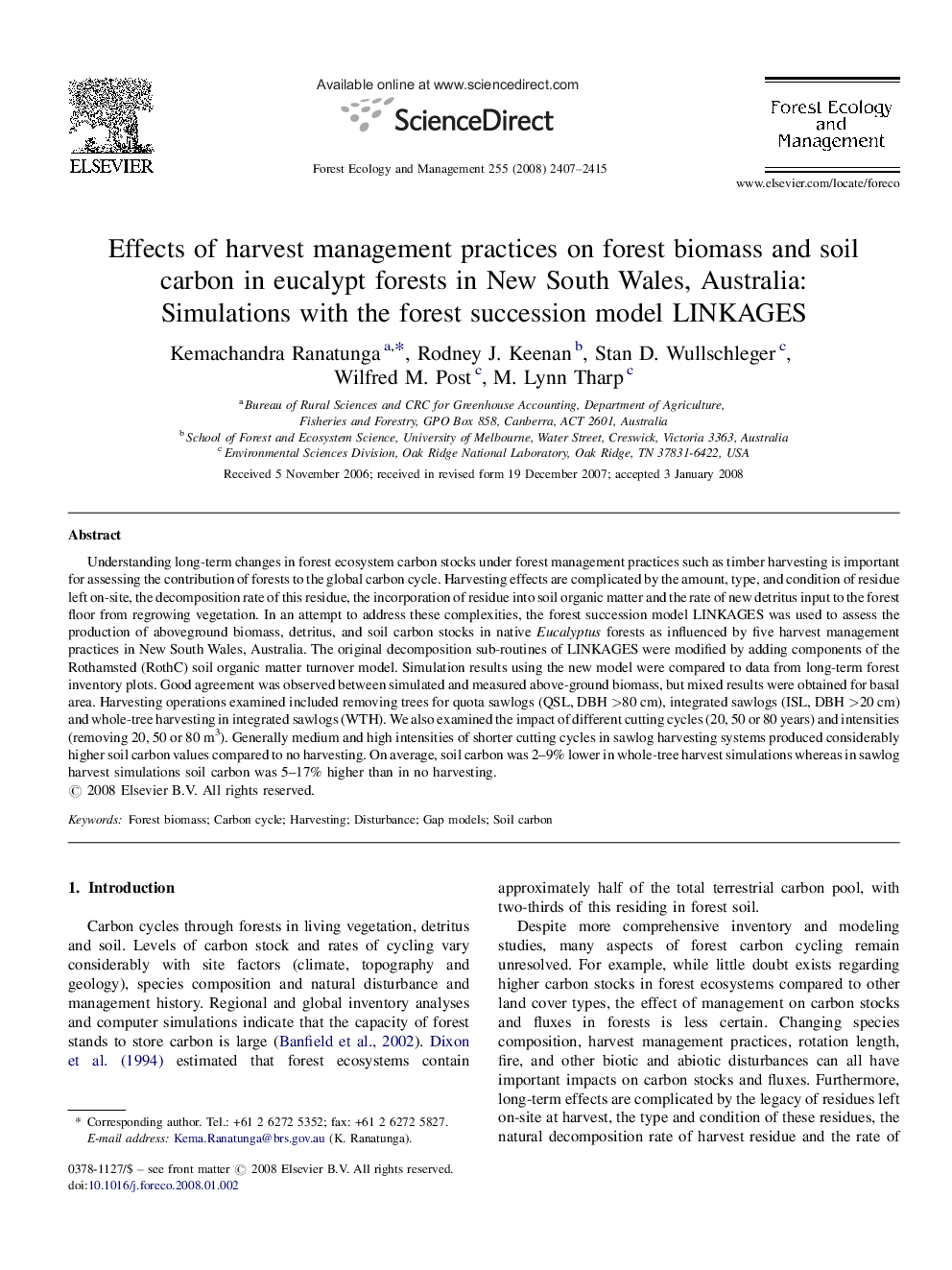| کد مقاله | کد نشریه | سال انتشار | مقاله انگلیسی | نسخه تمام متن |
|---|---|---|---|---|
| 89377 | 159340 | 2008 | 9 صفحه PDF | دانلود رایگان |

Understanding long-term changes in forest ecosystem carbon stocks under forest management practices such as timber harvesting is important for assessing the contribution of forests to the global carbon cycle. Harvesting effects are complicated by the amount, type, and condition of residue left on-site, the decomposition rate of this residue, the incorporation of residue into soil organic matter and the rate of new detritus input to the forest floor from regrowing vegetation. In an attempt to address these complexities, the forest succession model LINKAGES was used to assess the production of aboveground biomass, detritus, and soil carbon stocks in native Eucalyptus forests as influenced by five harvest management practices in New South Wales, Australia. The original decomposition sub-routines of LINKAGES were modified by adding components of the Rothamsted (RothC) soil organic matter turnover model. Simulation results using the new model were compared to data from long-term forest inventory plots. Good agreement was observed between simulated and measured above-ground biomass, but mixed results were obtained for basal area. Harvesting operations examined included removing trees for quota sawlogs (QSL, DBH >80 cm), integrated sawlogs (ISL, DBH >20 cm) and whole-tree harvesting in integrated sawlogs (WTH). We also examined the impact of different cutting cycles (20, 50 or 80 years) and intensities (removing 20, 50 or 80 m3). Generally medium and high intensities of shorter cutting cycles in sawlog harvesting systems produced considerably higher soil carbon values compared to no harvesting. On average, soil carbon was 2–9% lower in whole-tree harvest simulations whereas in sawlog harvest simulations soil carbon was 5–17% higher than in no harvesting.
Journal: Forest Ecology and Management - Volume 255, Issue 7, 20 April 2008, Pages 2407–2415